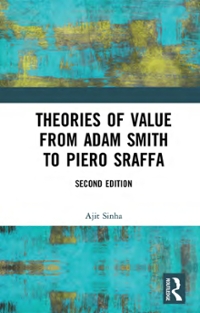What is the recursive system mean?
In the previous chapter we saw that there is a clear distinction between real and nominal variables. In the long run, real variables such as production, the real wage, and the real interest rate are independent of the money supply. Production is determined by the available production factors, the level of technology, and the natural rate of unemployment. The real wage is determined by the marginal prod- uct of labour and the mark-up factor, and the real rate of interest is determined so as to make desired savings equal to desired investment when production is at the natural level. With the real variables determined in this way, the level of the money supply determines the nominal variables - that is, variables expressed in monetary units. These include the price level and the nominal wage. The growth rate of the money supply determines the inflation rate and the nominal interest rate. Thus, we have a recursive system when we look at the economy in the long run: we can analyse the real variables first and then the nominal ones. This is how we proceeded in Chapters 2-7. There are two fundamental reasons behind this division between real and nominal variables: 1. The neutrality of money. Standard economic theory says that people care about real things. Workers and firms care about real income, the real wage, and the real interest rate. If the money supply and all prices and wages increase by 10 percent, real consumption, utility, and profits stay the same. In theory, nobody should care if one litre of milk costs one, two, or three euros if wages and all other prices rise in the same proportion. 2. Flexible wages and prices. When analysing the long run, we assumed that prices and wages adjusted to any changes in the exogenous variables that may occur. In fact, this is the definition of the long run; the long-run effect of a change in an exogenous variable is the effect on the economy after enough time has passed for wages and prices to adjust to the shock. The forces behind wage and price adjustment were analysed in Chapter 6. When- ever employment is above the natural level, all firms want to raise their relative wages, so there is upward pressure on wages. Conversely, when employment is low, firms have incentives to reduce their relative wages. Therefore, the only possi- ble long-run equilibrium is where employment and production are at their natural levels







